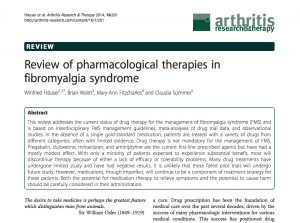Arthritis

It is a common misconception that arthritis is just minor aches and pains associated with getting older. Arthritis is not just a disease of old age. According the Arthritis Foundation, two-thirds of people with arthritis are under the age of 65, including 300,000 children.
A disease that is characterized by inflammation of one or more joints, arthritis in its late stages can be crippling. There are different forms of arthritis, such as osteoarthritis and rheumatoid arthritis. As of yet, no cure for arthritis exists, however, there are medications, procedures and treatments that can alleviate some of the pain caused by this disease.
Description
Osteoarthritis (OA), the most common form of arthritis, is a progressive degenerative joint disease caused by gradual wear-and-tear on the joints. It characterized by the breakdown of joint cartilage associated with risk factors, such as history of joint injury and age. Obesity can be a factor in osteoarthritis, as it causes additional stress to weight-bearing joints in the body, such as the hips and the knees
Rheumatoid Arthritis (RA), a systemic autoimmune disease, causing the body to attack its own tissues, in this case the membranes lining the joint, which causes pain, stiffness, swelling and sometimes severe joint damage
Treatment
Non-surgical options for facet joint pain include:
- Physical therapy and exercising. Walking, yoga, and water aerobics are among the best for those who suffer from arthritis as these activities are low impact
- Non-steroidal anti-inflammatory medications
Injection Therapy
- Single or series of steroid joint injections, to reduce inflammation.
- When in facet joints of the spine, Facet block and RFA are considered (see Spondylosis)
- For knee OA, hyaluronic acid joint injections are one treatment that may ease the pain and stiffness.
- In severe cases, the only relief a patient may be offered is through full joint replacement
Symptoms
For OA :
- Sore or stiff joints – particularly the hips, knees, and lower back — after inactivity or overuse
- Stiffness after resting that goes away after movement
- Pain that is worse after activity or toward the end of the day.
For RA, The severity of the disease can vary from person to person, and from day to day. Sudden increases in symptoms and illness are called flares, which vary in duration. Key rheumatoid arthritis symptoms are
- Pain, fatigue and warm, swollen, reddish joints.
- Long periods of joint stiffness in the morning are common.
- Inflammation in the small joints of the wrist and hand is typical.
Causes:
- Risk factors, such as history of joint injury and age.
- Obesity can be a factor in osteoarthritis
- For RA, genetic, environmental and hormonal factors
Screening and Diagnosis:
For OA
- Medical history, physical exam and, possibly, X-rays to confirm the diagnosis.
For RA
-
- The location and symmetry of painful joints, especially the hand joints
- Joint stiffness in the morning
- Bumps and nodules under the skin (rheumatoid nodules)
- Results of X-ray tests, and Blood tests
References:
-
- Arthritis – www.paindoctor.com/conditions/arm-pain/arthritis
- Centers for Disease Control and Prevention, www.cdc.gov/arthritis
- Mayo Clinic, www.mayoclinic.com/health/osteoarthritis
Related Research Articles
Title: Review of pharmacological therapies in fibromyalgia syndrome
Authors: Winfried Häuser, Brian Walitt, Mary-Ann Fitzcharles and Claudia Sommer
Journal: Arthritis Research & Therapy

